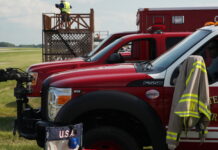It’s an affliction to which event organizers are largely immune, but it begins to affect air show performers at about this time every year.
More than two-thirds of the season is over. G tolerance is high. The performer has become “at one” with his aircraft and his sequence. Maneuvers that were difficult at the beginning of the season have become easier. The rhythm of practice, travel, performance and travel again have become comfortable and familiar.
But this is also the time when complacency often sets in. Some pilots begin to feel as though they’re just going through the motions. The end of the season is within sight. Planning for the next season begins to occupy more and more time. And, inevitably, somebody takes his eye off the ball with tragic results.
Historically, a disproportionate number of air show and air show-related incidents and accidents occur in late August, September and October. Cross country accidents become more likely. Veteran performers become inattentive and make the kinds of mistakes that would normally be expected of rookies. Rookies don’t feel like rookies anymore and begin to take chances that they would not have taken earlier in the air show season.
Changing the culture of air show safety means breaking away from the behavior that has helped to generate unnecessary risk. This is one of them. Do a brief, but deliberate self-assessment. Is it possible that you are suffering from late season inattention or complacency? If you are, what are you going to do to mitigate this unnecessary risk?








